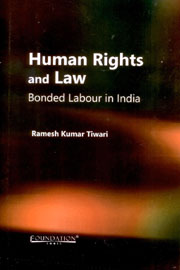Book contents
- Frontmatter
- Contents
- List of Tables
- Foreword
- Preface
- 1 Introduction
- 2 Slavery and Debt Bondage in British India: Policy and Implementation
- 3 Debt Bondage during the Post-Independence Period: Policy Developments
- 4 Problems in the Implementation of Bonded Labour System (Abolition) Act, 1976
- 5 Rehabilitation of Released Bonded Labourers
- 6 Judicial Intervention
- Conclusion
- Appendices
- Glossary
- Biographical Notes
- Bibliographical Essay
- Index
Foreword
Published online by Cambridge University Press: 26 October 2011
- Frontmatter
- Contents
- List of Tables
- Foreword
- Preface
- 1 Introduction
- 2 Slavery and Debt Bondage in British India: Policy and Implementation
- 3 Debt Bondage during the Post-Independence Period: Policy Developments
- 4 Problems in the Implementation of Bonded Labour System (Abolition) Act, 1976
- 5 Rehabilitation of Released Bonded Labourers
- 6 Judicial Intervention
- Conclusion
- Appendices
- Glossary
- Biographical Notes
- Bibliographical Essay
- Index
Summary
It is indeed an honour to contribute a few words by way of introduction to Professor Ramesh Kumar Tiwari's excellent monograph concerning the law and public policy on bonded labour in India. This work, historically rich in its sweep, remains also fully contemporaneously relevant.
Professor Tiwari remains primarily concerned with the problem of debt bondage. Within this broad theme, he looks into the ways in which the problems of policy/law/implementation emerged in colonial and postcolonial times. He thus highlights, historically, two totally diff erent systems of governance, yet converging on similar outcomes from the standpoint of the people held hostage to the debt bondage system. The overall conclusion of this work, based on a sustained sociological analysis, is simply this: ‘The democratic system with all its trappings including media, NGOs and the civil society’ (to use a succinct formulation conveyed by the author to me in a personal communication) continues to reproduce structural political injustice against India's unfree labourers.
We travel with the author some vast territories of the origins of the bonded labour systems and the itineraries of continuity between the colonial and postcolonial ‘legality’. Of particular importance here is the narrative in Chapter 2 reminding us of the feat of the Charter Act, 1833, the Indian Law Commission 1841 Report on Slavery in India and of the subsequent 1843 Slavery Act.
- Type
- Chapter
- Information
- Human Rights and LawBonded Labour in India, pp. vii - xiPublisher: Foundation BooksPrint publication year: 2011

